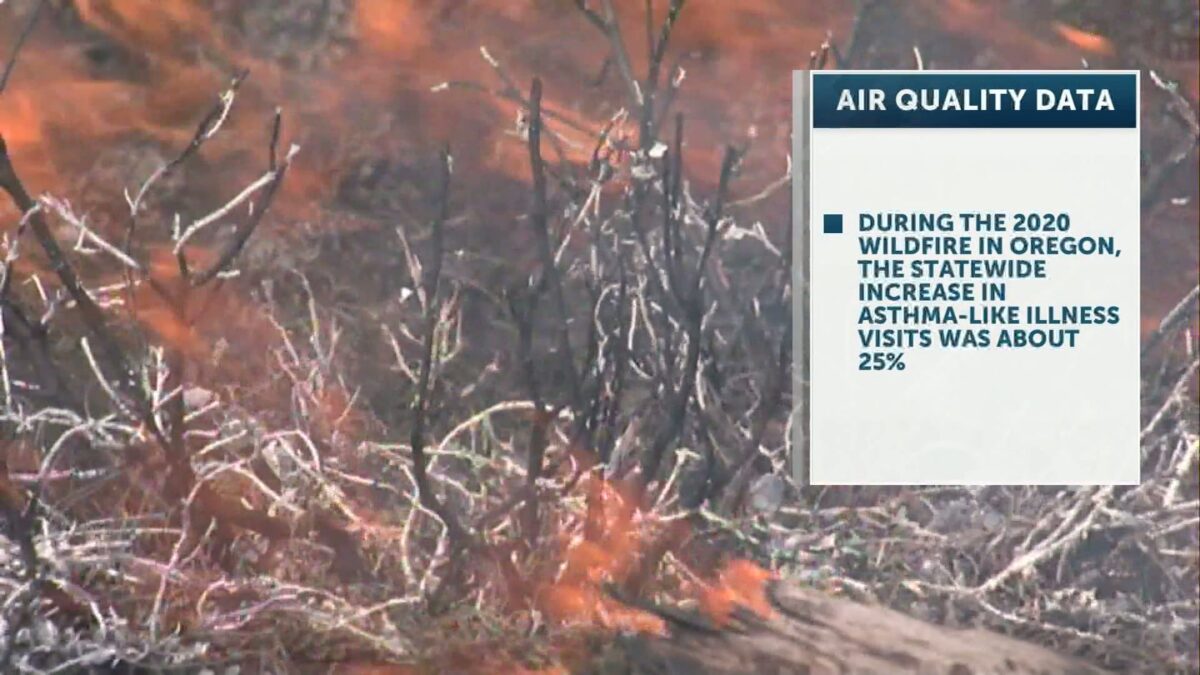New Oregon health data shows rise in emergency room visits when air quality is poor

KTVZ
Update: Adding video
PORTLAND, Ore. (KTVZ) — New data released Wednesday by the Oregon Health Authority show that when air quality worsens across the state, more Oregonians end up in emergency rooms and urgent care for breathing problems and mental health concerns.
The findings come from OHA’s newly updated Air Quality & Health Outcomes data dashboard, which tracks health trends across Oregon. The numbers show clear spikes in visits for asthma, chronic obstructive pulmonary disease (COPD), anxiety and other stress-related symptoms on days with high levels of pollution or wildfire smoke.
“Oregon’s near-real-time data show us what we’ve long suspected — that poor air quality affects not just our lungs, but also our mental well-being,” said Jen Seamans, who manages OHA’s Data and Epidemiology Unit. “This insight helps local health partners and hospitals prepare for the health impacts of smoke and other air pollution events as they happen.”
During the 2020 wildfires, statewide visits for asthma-like illnesses jumped about 25% compared to the previous month. In the Portland tri-county area, emergency visits for respiratory issues in 2022 were sharply higher than before the pandemic — up 44% in Washington County, 35% in Clackamas County and 7% in Multnomah County.
The data also highlight disparities. Hispanic and Latino Oregonians saw roughly a 30% increase in asthma-related visits during major smoke events, compared with about 22% for other populations.
On days when air quality is poor, emergency and urgent care visits tied to anxiety and stress go up statewide, OHA said. The agency’s analysis links exposure to wildfire smoke with higher reports of stress and mental health symptoms among adults.
OHA said it’s using this information to help local health departments plan for resource surges during pollution events, target public health alerts to at-risk groups, and support broader climate resilience planning that includes health equity.
The dashboard draws on data from Oregon’s Electronic Surveillance System for the Early Notification of Community-Based Epidemics (ESSENCE) and the National Syndromic Surveillance Program. Numbers are updated weekly, providing what OHA calls a “timely picture” of how environmental conditions affect health.
Officials emphasize that while the data show strong correlations between poor air quality and increased health visits, they don’t prove direct cause and effect. Other factors — such as care-seeking patterns or reporting delays — may play a role.
OHA plans to expand its monitoring in future updates, adding more years of data, new health measures such as hospitalizations, and broader pollutant analyses.
The dashboard and related materials are available at the Oregon Environmental Public Health Tracking website.